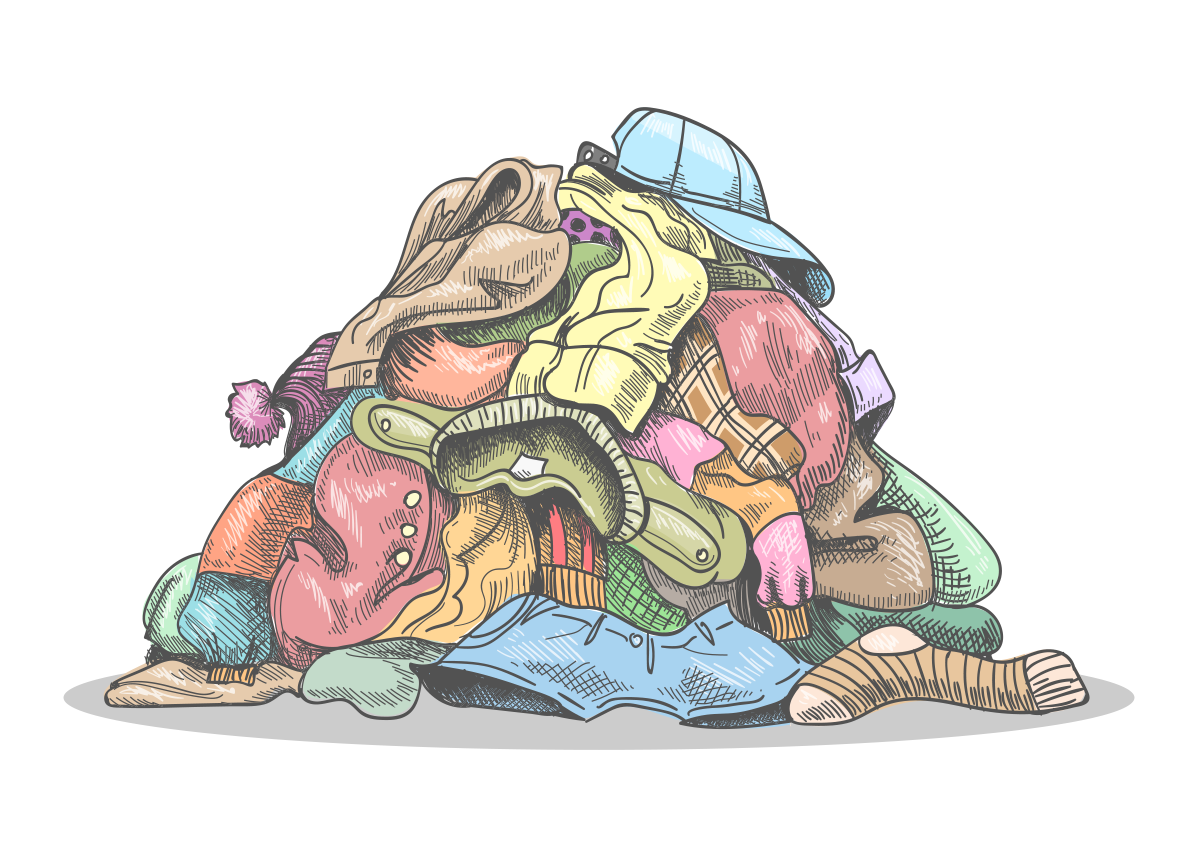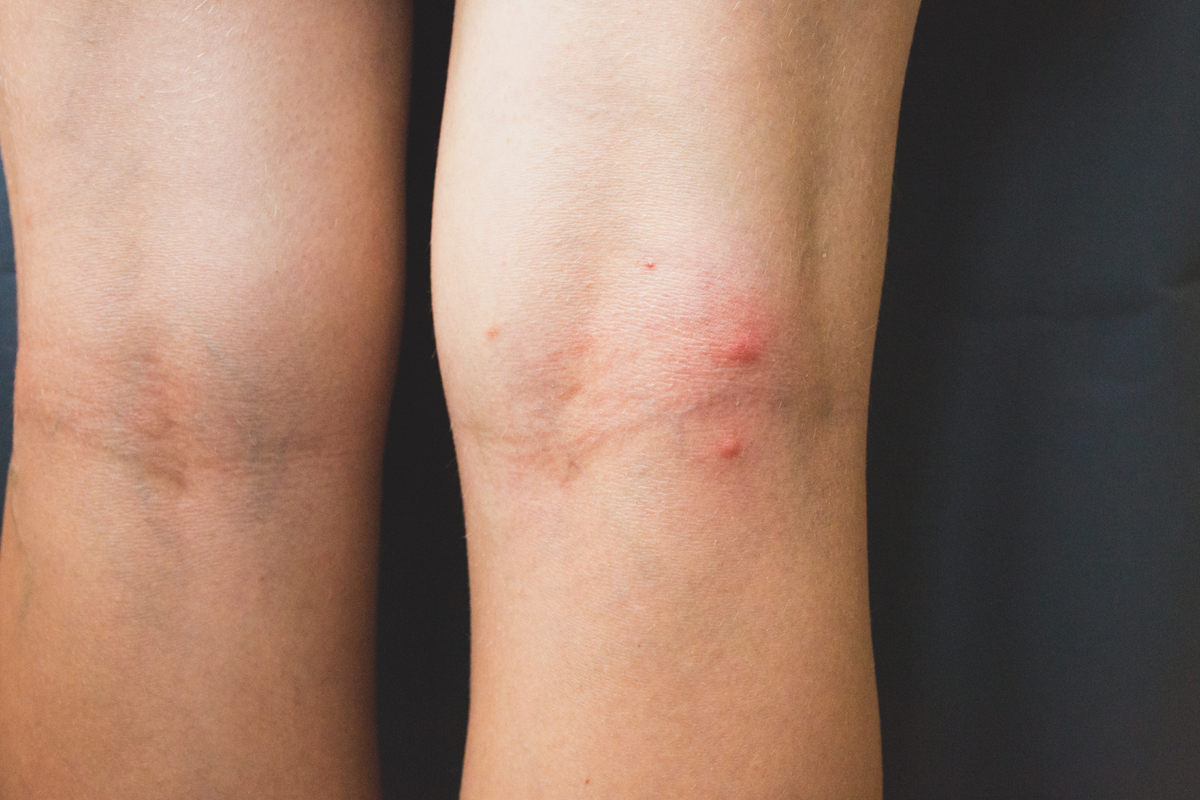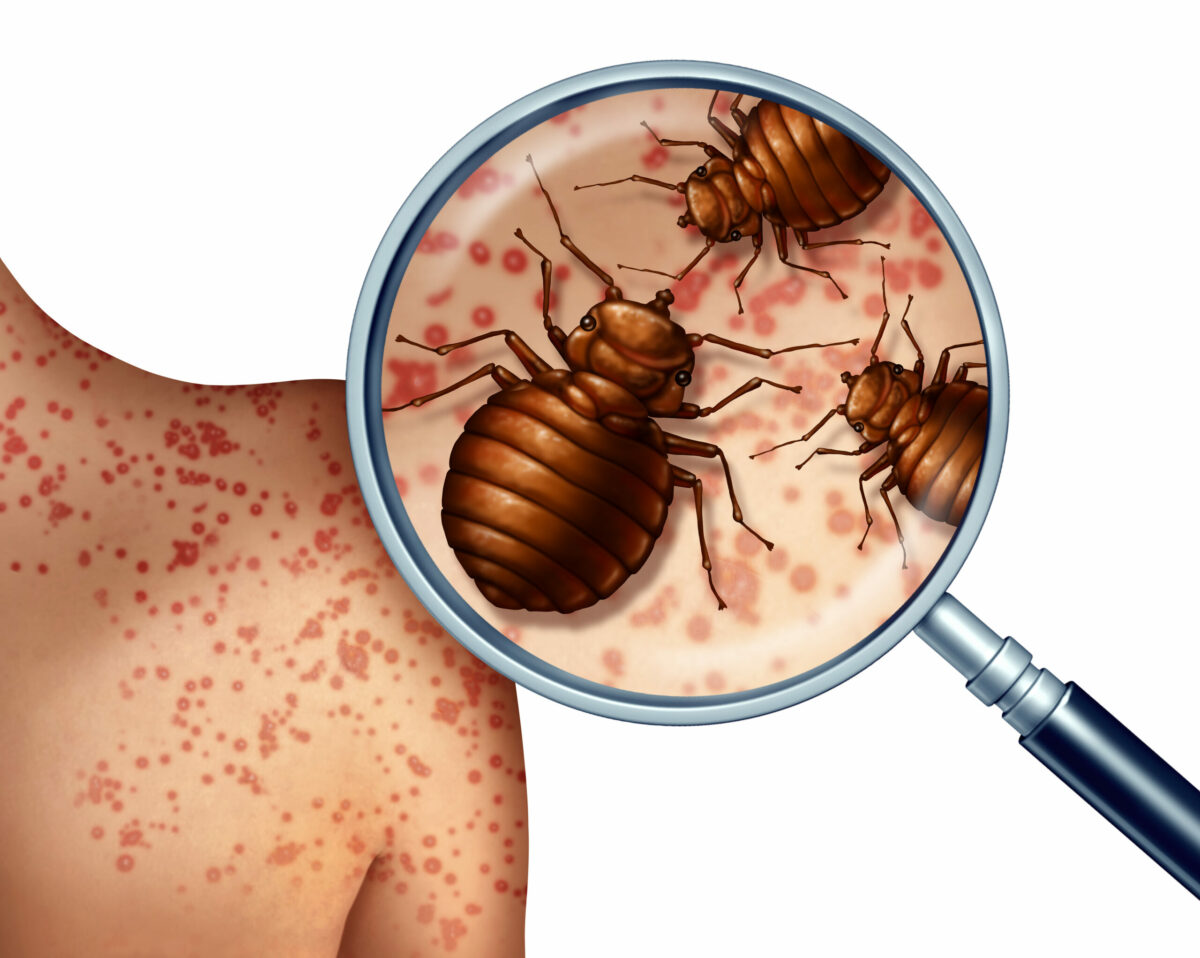Bed bugs can be a nightmare for homeowners, causing both physical discomfort and emotional distress. These pesky pests are notorious for their resilience and ability to hitchhike from one place to another. Disrupting and eradicating these pests for good requires a systematic and thorough bed bug treatment strategy. In this piece, we will guide you through a comprehensive checklist for bed bug treatment to aid you in reclaiming your peaceful, bug-free home.
The crucial first step in the process is recognizing the presence of adult bed bugs or nymphs. Once you’ve confirmed the existence of adult bed bugs, it’s time to prepare your household for effective treatment. By maintaining cleanliness, reducing clutter, and closely following guidance from professionals, you can increase the effectiveness of the treatment strategies. Lastly, it’s essential to adopt additional measures and stay vigilant after successful eradication to ensure bed bugs don’t make a comeback.
Key Takeaways
- Before commencing the bed bug treatment process, confirm the presence of adult bed bugs in your home.
- Thoroughly prep your home, including crawl spaces, dressers, and areas away from the wall for an effective treatment strategy.
- After successful eradication, adopt additional measures and monitor regularly to prevent re-infestations
Identifying the Presence of Bed Bugs
https://www.youtube.com/watch?v=u2ITc9Lk4hs&embed=true
Signs of an Infestation
When it comes to adult bed bugs or bedbug nymphs, early detection is instrumental in successfully destroying them. One of the first things to look out for are signs of an infestation. Keep an eye out for small, rust-colored specks on your sheets, mattress, or pillowcases. These could either be stains from crushed adult bed bugs or their droppings. You may also find tiny, white molted skins that bed bugs shed as they grow. Another sign is waking up with itchy, red bed bug bites on your skin. Remember, bed bugs are sneaky creatures, and no evidence of their presence doesn’t always guarantee a clean home.
Checking Common Hiding Places
It’s essential to inspect your home for these little critters. Bed bugs love tight spaces and are experts at sneaking into cracks and crevices that often go unnoticed. Here’s a quick checklist of common hiding places:
- Mattress seams and tags
- Box springs and bed frames
- Drawer joints
- The seams of chairs and couches
- Between cushions and in the folds of curtains
- Behind electrical outlets and light switches
Don’t forget to check your furniture as well, since bed bugs can easily hitch a ride from one room to another.
Understanding Bed Bug Behavior
Knowing how bed bugs behave can be extremely helpful in identifying their presence. These pests are primarily nocturnal and attracted to body heat, which is why they prefer to feed on us when we sleep. An increase in heat and the presence of blood can draw them out, making it easier for detection. However, bed bugs can survive up to a yearwithout a meal, so don’t assume you’ve eradicated them if you haven’t seen any signs in a while.
Ultimately, the key to effectively dealing with bed bugs is knowledge. By understanding their behavior and the signs of their presence, we can catch infestations early and make the process of removal much more manageable.
Preparing Your Home for Treatment

Isolating Infested Areas
First, let’s isolate the infested areas to prevent bed bugs from spreading to other parts of your home. We recommend encasing your mattresses and pillows in bed bug-proof covers. Wash all bedding, curtains, and clothes in hot water, and then dry them on the highest heat setting to kill any lingering bugs. For items that can’t be washed, like stuffed animals and shoes, place them in a sealed plastic bag and put them in the freezer for at least 4 days at 0°F (-17.78°C) to eliminate any bed bugs (source).
Next, let’s install bed bug interceptors under the legs of your bed and other furniture. These devices will trap the bugs as they try to climb onto your bed or furniture, helping us monitor and control the infestation.
Cleaning and Decluttering
Now, it’s time to focus on cleaning and decluttering your home. Start by removing and cleaning your drapes and drapery hardware, as well as any items on your furniture. Make sure to look for bed bugs, eggs, and other evidence, such as shed skins and hatched eggs, while doing so (source).
Grab your vacuum and give every room a thorough vacuuming, focusing on carpets, baseboards, and cracks where bed bugs could be hiding. Don’t forget to vacuum your mattress and box spring, too. After vacuuming, seal the vacuum bag in a plastic bag, and dispose of it outside to prevent any escapees from reinfesting your home (source).
Lastly, consider using a steam cleaner to treat any areas you think might still have bed bugs present. The high heat from the steam will kill the bugs and their eggs on contact, making it an effective way to further clean and treat your home. Just be sure to follow the manufacturer’s instructions for the steam cleaner, and use caution, as steam can cause burns.
By following these steps to prepare your home for treatment, we’ll be well on our way to eradicating bed bugs for good.
Effective Treatment Strategies

To effectively eradicate bed bugs, it’s essential to develop a comprehensive treatment plan that includes different strategies. In this section, we’ll discuss chemical approaches, non-chemical methods, and essential oils for bed bug control.
Chemical Approaches
When it comes to using chemical treatments, safety should always be our top priority. Many pesticides and insecticides are available in the market for bed bug control. However, it is important to remember that bed bugs may develop resistance to certain chemicals over time. Integrated pest management (IPM) plays a crucial role in ensuring the treatment’s long-term success.
Some of the common chemical treatments include:
- Insecticides: Products containing compounds like chlorfenapyr are effective against bed bugs. Always follow the label instructions and seek professional help if necessary.
- Foggers: While these may seem like an easy solution, it’s essential to remember that their efficacy can be limited. Foggers often fail to penetrate crevices where bed bugs hide.
Non-Chemical Methods
Non-chemical methods are a great alternative to chemical treatments and can be highly effective when used correctly. Some non-chemical methods for bed bug eradication include:
- Heat Treatment: A powerful strategy that involves raising the temperature of the infested area to at least 118°F for 90 minutes or more. This method ensures that both bed bugs and their eggs are killed.
- Diatomaceous Earth: A natural, non-toxic powder that damages the bed bug’s exoskeleton, leading to its dehydration and eventual death.
- Freezing: Placing small infested items in the freezer for at least four days can help to kill bed bugs and their eggs.
- Vacuuming: Regular vacuuming can help reduce bed bug populations. Ensure to immediately seal and dispose of the vacuum bag to prevent them from escaping back into your living space.
Working with a professional pest control company or exterminator is always recommended for the best results.
Essential Oils For Bed Bug Control
While essential oils may not always guarantee complete bed bug eradication, they can contribute to an integrated pest management plan. Some essential oils known to have insecticidal properties include:
- Tea Tree Oil: Known for its antimicrobial and insecticidal properties, tea tree oil can be diluted with water and sprayed onto infested areas.
- Lavender Oil: The scent of lavender is believed to repel bed bugs. It can be used in sachets or added to laundry detergent to keep bed bugs at bay.
- Peppermint Oil: With its strong, refreshing scent, peppermint oil can act as a natural repellent. Dilute it with water and spray it around your bed and other potentially infested areas.
Remember that controlling bed bugs can be a complex and time-consuming process, and combining different treatment strategies is often the most effective approach.
Additional Measures and Considerations
Travel and Prevention
Traveling can sometimes result in unwanted bed bug encounters. To safeguard ourselves, we must follow a few precautionary steps. Firstly, it’s crucial to inspect hotel rooms, focusing on the mattress and box spring. Secondly, keep luggage on luggage racks or tiled floors and away from walls. Finally, after returning home, unpack directly into the washing machine and wash clothes at high temperatures to eliminate any potential hitchhikers.
Legal and Landlord Responsibilities
In many cases, the responsibility for controlling bed bugs falls on the landlord or property owner, but tenant cooperation is essential. Legally, landlords should maintain safe and habitable living conditions, which includes addressing bed bug infestations.
Here’s a checklist for landlords:
- Promptly respond to tenant reports of bed bugs.
- Hire a licensed pest control professional.
- Provide tenants with a bed bug preparation checklist.
- Ensure regular pest control inspections.
Maintaining a Bed Bug-Free Environment
Maintaining a bed bug-free environment requires proactive measures. Here are some suggestions:
- Regularly inspect sleeping areas, paying attention to mattress seams, headboards, and baseboards.
- Vacuum and steam-clean sleeping spaces, focusing on crevices and seams.
- Minimize clutter, which provides hiding spaces for bed bugs.
- Seal and caulk cracks in walls, baseboards, and furniture to eliminate hiding spots.
- Use bed bug interceptors on bed legs to prevent them from climbing.
By following these tips, we can reduce the risk of bed bug infestations and ensure healthy and restful sleep for ourselves and our loved ones.
Living with Bed Bugs
Dealing with Bed Bug Bites
Let’s face it, bed bug bites are a nuisance, and they can be quite irritating. The key to managing bites is taking good care of our skin. First and foremost, we should avoid scratching. Scratching will only make the itchiness worse and could lead to infection. Instead, we can apply over-the-counter hydrocortisone cream to help alleviate itchiness and reduce inflammation.
It’s crucial to maintain our skin’s cleanliness by regularly washing the affected areas with mild soap and water. We can also use a cold compress to help relieve the itch and swelling. If our symptoms persist, don’t hesitate to consult a healthcare professional.
Minimizing Impact on Daily Life
Living with bed bugs doesn’t mean we have to let them take over our daily routines. Being proactive and implementing strategies to reduce their impact on our lives is essential. Here are a few tips to minimize the impact of bed bugs:
- Sleep: To ensure a good night’s rest, we can take measures like encasing our mattresses in bed bug-proof covers and using a bed bug interceptor under each leg of the bed frame. This will help prevent them from climbing up and biting us during sleep.
- Pets: Bed bugs can also affect our furry friends. It’s crucial to inspect our pets’ sleeping areas regularly and wash their bedding in hot water to kill any bed bugs.
- Office and School: Keep in mind that bed bugs can hitch a ride on our belongings. To prevent spreading them to our workplace or our kids’ school, we should regularly inspect our bags, shoes, and other personal items for signs of bed bugs.
- Managing Infestation: Lastly, it’s vital to address the bed bug infestation in our home. Follow a comprehensive bed bug removal checklist to successfully eradicate them for good. If necessary, seek professional help to address the issue.
By following these tips and staying vigilant, we can reduce the impact of bed bugs on our daily life and eventually eradicate them from our homes.
Aftercare and Monitoring
Ensuring Complete Eradication
After treating our home for bed bugs, we want to be sure that every single one of them has been eradicated for good. Here are some steps we can take to ensure their complete removal:
- Vacuuming: Thoroughly vacuum all the areas surrounding the treated spaces, such as carpets, rugs, and upholstered furniture. It’s essential to clean the vacuum cleaner thoroughly after use, making sure no bed bugs are left inside.
- Linen Washing: Wash all linens, bedding materials, and clothing in the highest allowable water temperature and dry on the hottest heat setting possible. If possible, bag these items and place them in the freezer at 0°F (-17.78°C) for at least 4 days to kill any remaining bed bugs.
- Inspecting: Regularly inspect mattresses, bed frames, and other hiding spots for bed bugs. Monitoring their presence using tools like interceptors can be helpful in detecting any resurgence.
Ongoing Detection and Prevention
Just because we’ve eliminated bed bugs from our home doesn’t mean we can let our guard down. Here’s a checklist of ongoing detection and prevention methods to keep them away:
- Detection: Use tools such as bed bug interceptors or sticky traps around the bed legs to monitor their activity. Regularly check for any signs of the pests.
- Reduce clutter: Bed bugs love hiding in clutter, so by keeping our home tidy, we can minimize their hiding spots.
- Seal entry points: Seal any cracks or molding in walls or furniture to prevent bed bugs from re-entering our space.
- Travel precautions: Check hotel rooms when traveling, and be cautious when bringing luggage and clothing back into our home. Avoid placing bags on beds or upholstered furniture in unfamiliar places.
Remember, prevention is always better than having to deal with a new bed bug infestation. By consistently following these steps, we can help ensure that our homes stay bed bug-free.
Q: What are bed bugs?
A: Bed bugs are small, reddish-brown insects that feed on the blood of humans and animals. They are often found in mattresses, furniture, and other areas where people sleep or spend a significant amount of time.
Q: How can I tell if I have bed bugs in my home?
A: Look for signs of bed bug activity such as small red or brown spots on your mattress or furniture, tiny white eggs, or shed skins. You may also notice itchy welts on your skin from bed bug bites.
Q: What is the best way to get rid of bed bugs?
A: The most effective way to get rid of bed bugs is to contact a professional pest control company. They can provide comprehensive treatment options such as heat treatments, insecticides, and other control solutions to eliminate the infestation.
Q: Can I get rid of bed bugs on my own?
A: While some DIY methods may provide temporary relief, it is best to contact a professional pest control company to ensure that the infestation is completely eradicated. Professionals have the expertise and tools to effectively treat bed bug infestations.
Q: What are some common signs of a bed bug infestation?
A: Common signs of a bed bug infestation include small red or brown spots on bedding, furniture, or walls, a musty odor in the infested area, and the presence of live insects or their shed skins.
Q: How can I protect my home from bed bugs?
A: To protect your home from bed bugs, regularly inspect your bedding, furniture, and other potential hiding spots for signs of bed bug activity. Also, consider using protective mattress encasements and be cautious when bringing used furniture into your home.
Q: What should I do if I suspect a bed bug infestation?
A: If you suspect a bed bug infestation in your home, contact a professional pest control company immediately. Acting promptly can help prevent the infestation from spreading and make it easier to eliminate.
Q: Can bed bugs be effectively killed with bug spray?
A: While some insecticides can effectively kill bed bugs on contact, they may not address the entire infestation. Professional pest control companies can use a combination of treatment methods to effectively eliminate bed bugs.
Q: How do bed bug heat treatments work?
A: Bed bug heat treatments work by raising the temperature in the infested area to levels that are lethal to bed bugs. This method can effectively eliminate bed bugs, including their eggs, without the use of chemicals.
Q: Are there any specific measures to prevent bed bugs while traveling?
A: When traveling, inspect your accommodation for signs of bed bugs, such as small red or brown spots on bedding, furniture, or walls. Keep your luggage off the floor and away from the bed, and consider using protective mattress encasements for added protection.

































